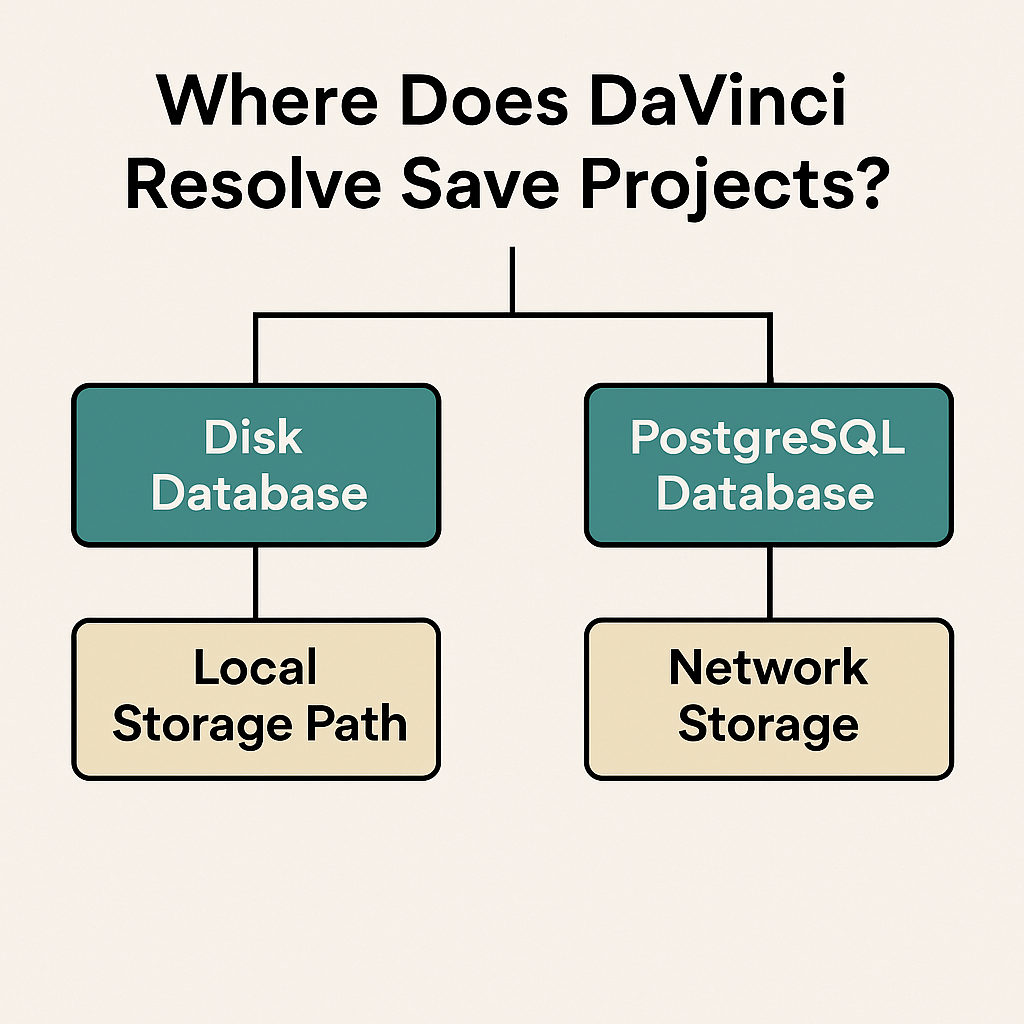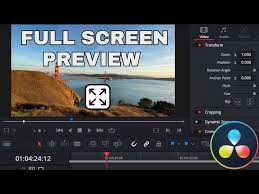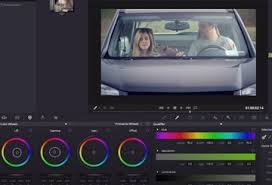Introduction
If you’ve ever finished a late-night editing session in DaVinci Resolve and asked yourself, “Where does DaVinci Resolve save projects?”, you’re not alone. Many editors, from beginners on YouTube to professionals in film studios, often get confused about how and where Resolve stores project data. Unlike traditional software that simply saves a project file to a folder, DaVinci Resolve uses a database system. This structure can feel unusual at first but offers much more flexibility, security, and scalability, especially for collaborative environments.

In this article, we’ll break down exactly how DaVinci Resolve saves projects, where to find them on your computer, and the best practices for backing up and managing project files.
Understanding How DaVinci Resolve Saves Projects
DaVinci Resolve doesn’t just create a single “.project” file like some editing programs. Instead, it saves projects into a Project Database. Think of the database as a container or library that holds multiple projects and their metadata.
There are two main types of databases:
Disk Database (Local)
Projects are saved directly on your computer’s hard drive.
Default location on Windows:
C:\Users\<username>\AppData\Roaming\Blackmagic Design\DaVinci Resolve\Support\Resolve Disk Database\Resolve ProjectsDefault location on macOS:
/Users/<username>/Library/Application Support/Blackmagic Design/DaVinci Resolve/Resolve Disk Database/Resolve ProjectsBest for solo editors and personal projects.
PostgreSQL Database (Shared/Networked)
Allows multiple users to access and collaborate on the same set of projects over a network.
Common in professional studios and collaborative workflows.
Requires setup of PostgreSQL database server.
This means when you ask, “Where does DaVinci Resolve save projects?”, the answer depends on whether you’re using a disk database or a shared PostgreSQL database.
Why DaVinci Resolve Uses Databases Instead of Files
At first, it might feel inconvenient, but there are good reasons behind this design:
Faster access and organization: Instead of digging through folders, you can quickly view all projects in the Project Manager.
Backup and restore: Databases can be exported and backed up as a single file.
Collaboration support: Shared databases allow multiple editors, colorists, and sound designers to work together on the same project.
Stability: Databases reduce the risk of corrupted project files compared to single standalone files.
How to Locate Your DaVinci Resolve Project Files
If you need to directly access your saved projects, here’s how to find them:
Open Resolve → Project Manager
When Resolve starts, the Project Manager window shows your available projects and databases.
Check Disk Database Location
Go to DaVinci Resolve > Preferences > System > Media Storage to confirm the exact database path.
Backup a Project
Right-click the project in the Project Manager.
Choose Export Project or Export Project Archive.
The .drp file (DaVinci Resolve Project) can then be saved anywhere, including external drives or cloud storage.
Best Practices for Managing DaVinci Resolve Projects
Regular Backups
Always export .drp backups of important projects.
Use cloud storage services like Google Drive or Dropbox for extra protection.
Use Separate Databases for Large Workflows
Keep YouTube or personal projects in one database.
Store client or professional projects in another database for better organization.
Leverage Project Archives
Use “Export Project Archive” to save not only the project but also linked media, making it easy to reopen the project on another system.
Collaborative Workflow Setup
For studios, set up a PostgreSQL shared database.
Blackmagic Design recommends using dedicated servers for team environments.
Real-World Example: Project Storage in Action
In 2022, Blackmagic Design shared that some professional film studios keep over 100 TB of footage linked to projects stored in PostgreSQL databases. By using this system, multiple editors can log in and work on different aspects of the same project simultaneously without duplication issues.
On the other hand, independent creators on YouTube often stick to the disk database and just export .drp files as backups. This highlights how DaVinci Resolve’s flexible project storage system caters to both solo editors and enterprise-level studios.
FAQs About Where DaVinci Resolve Saves Projects
Q1: Can I change where DaVinci Resolve saves projects?
Yes. When creating a new database, you can choose a custom location, such as an external SSD.
Q2: What file type does DaVinci Resolve use for saved projects?
Projects are stored in the database but can be exported as .drp files (DaVinci Resolve Project files).
Q3: How do I move a DaVinci Resolve project to another computer?
Export the project as a .drp file, then import it on the new computer. If media files are also needed, use “Export Project Archive.”
Q4: Are DaVinci Resolve projects stored in the cloud by default?
No. Projects are stored locally unless you back them up manually to cloud storage.
Q5: What happens if my database gets corrupted?
You could lose access to all projects in that database. That’s why exporting backups regularly is strongly recommended.
Conclusion
So, where does DaVinci Resolve save projects? The answer is simple yet powerful: inside databases—either a local disk database or a shared PostgreSQL database. While this structure might feel unusual for new users, it provides unmatched reliability, scalability, and collaboration support.
For solo editors, the disk database is usually enough, but for professional teams, a PostgreSQL setup ensures smooth collaboration. No matter which workflow you use, always remember to export .drp backups to safeguard your work.
By mastering where and how DaVinci Resolve saves projects, you’ll not only save time but also avoid the nightmare of losing hours of creative editing.








